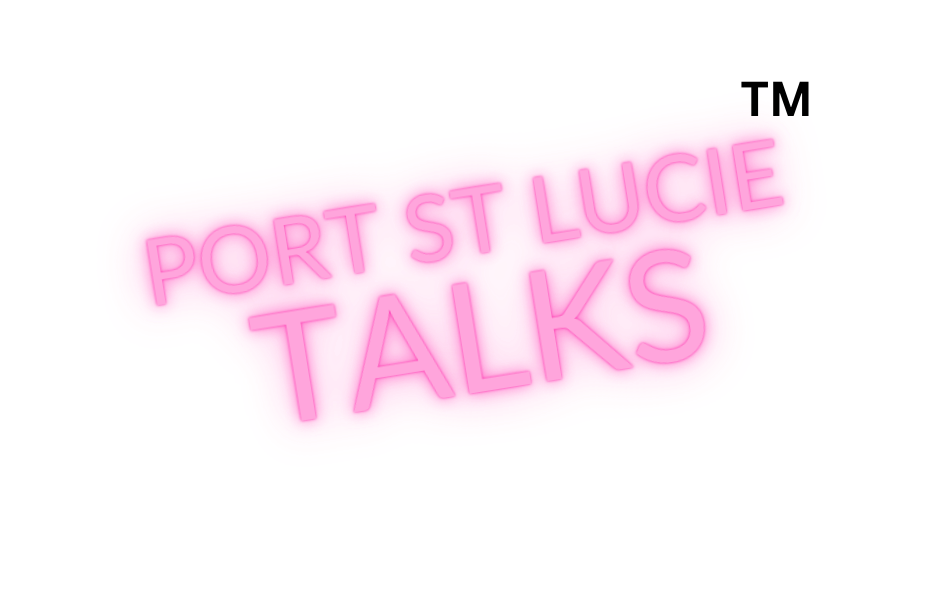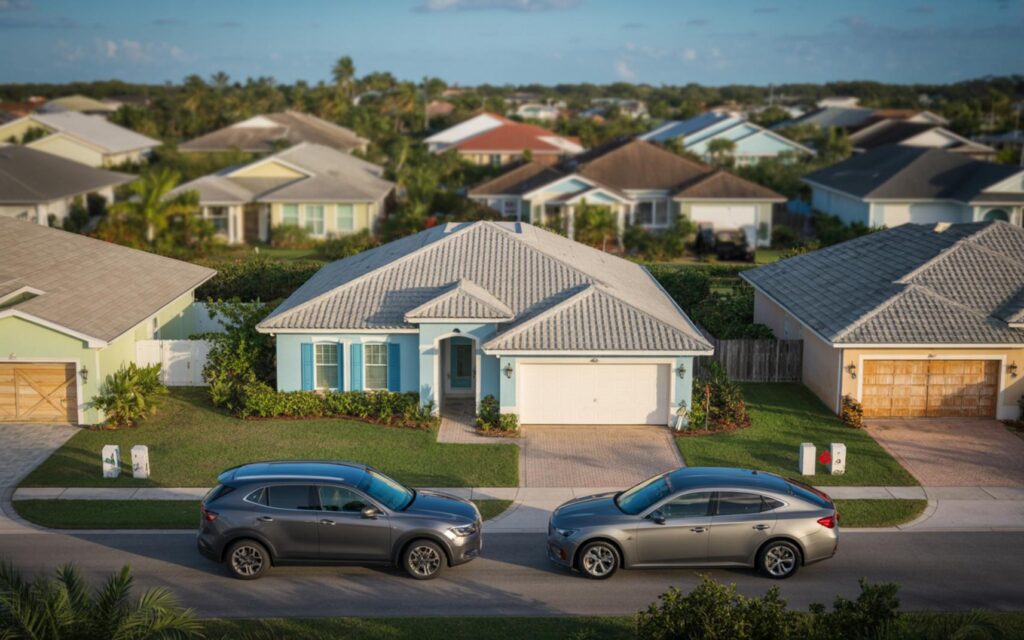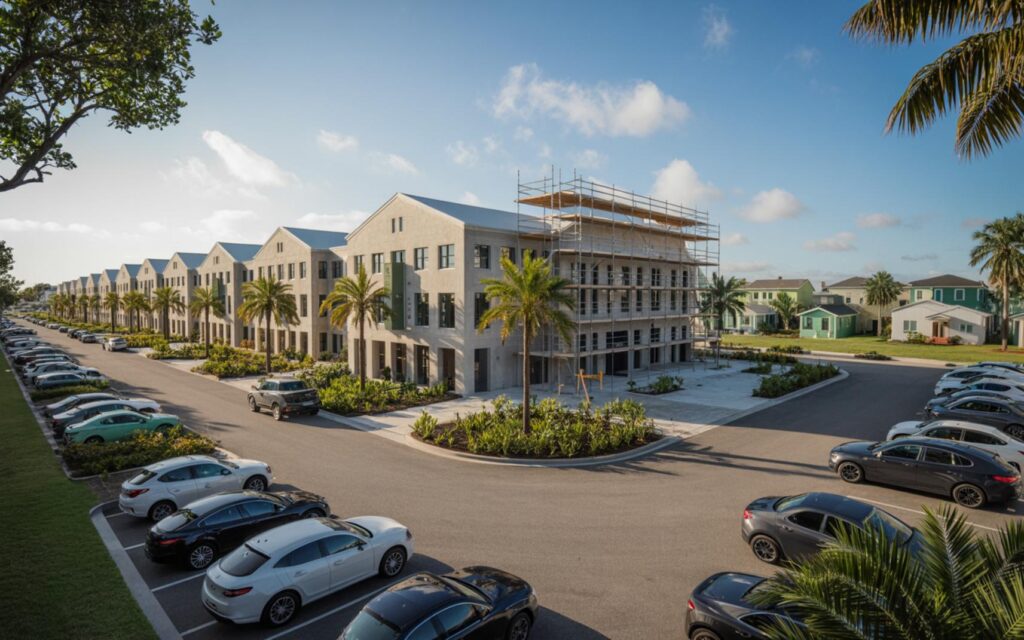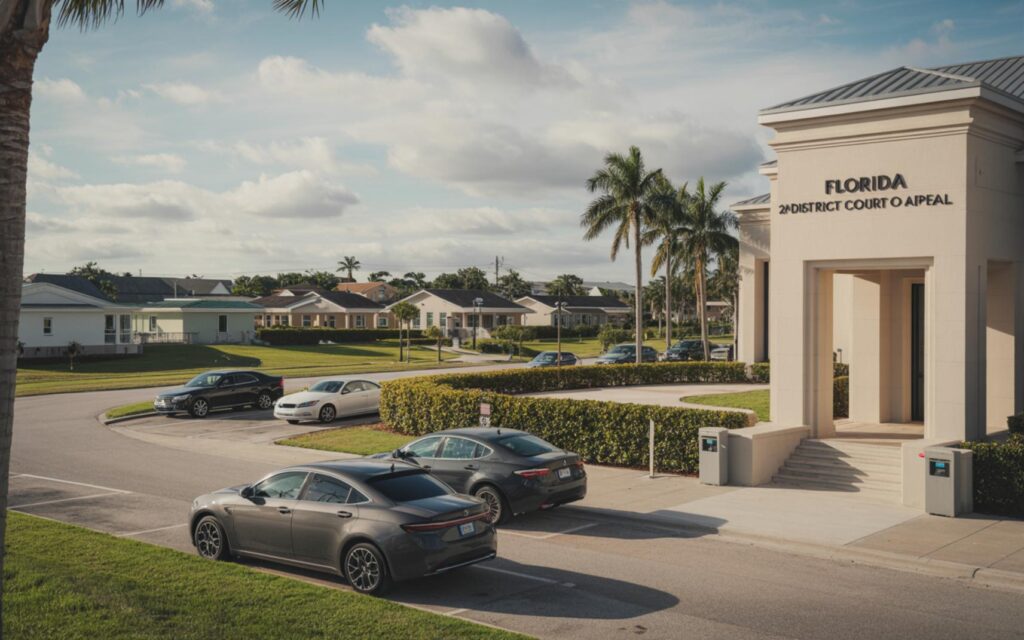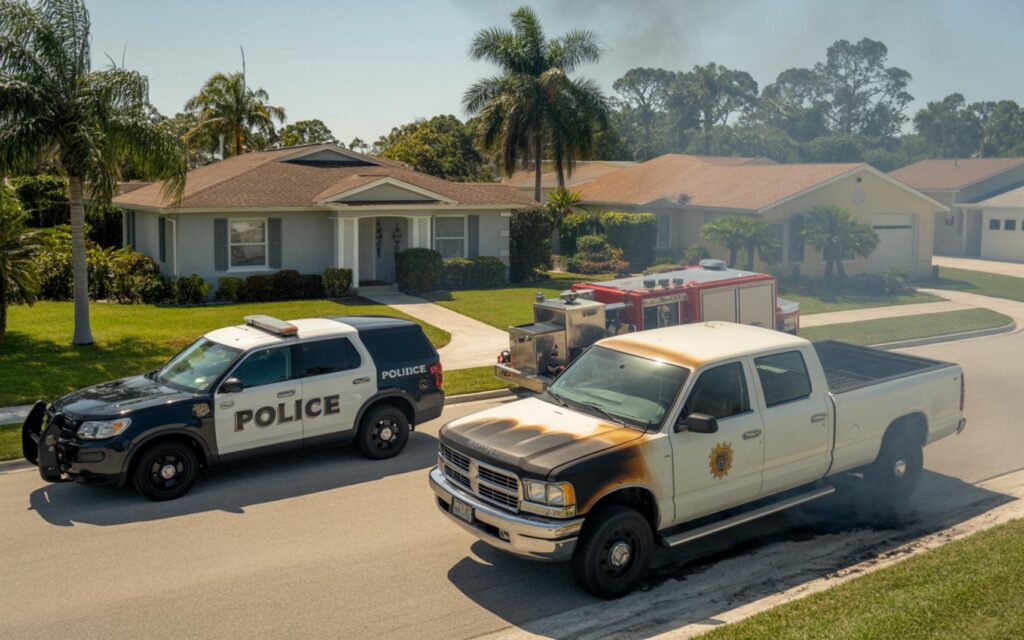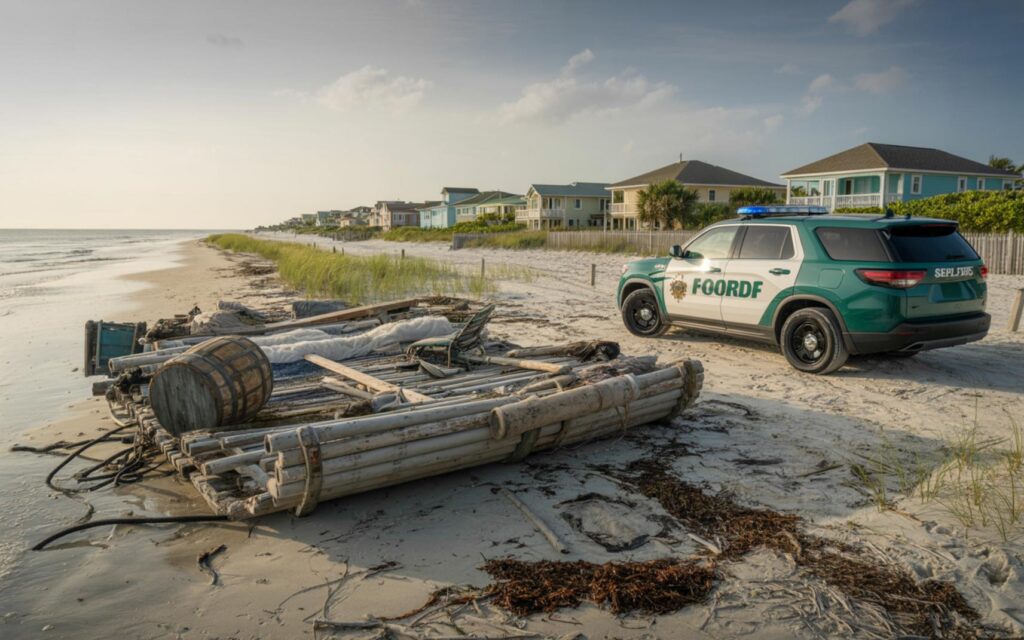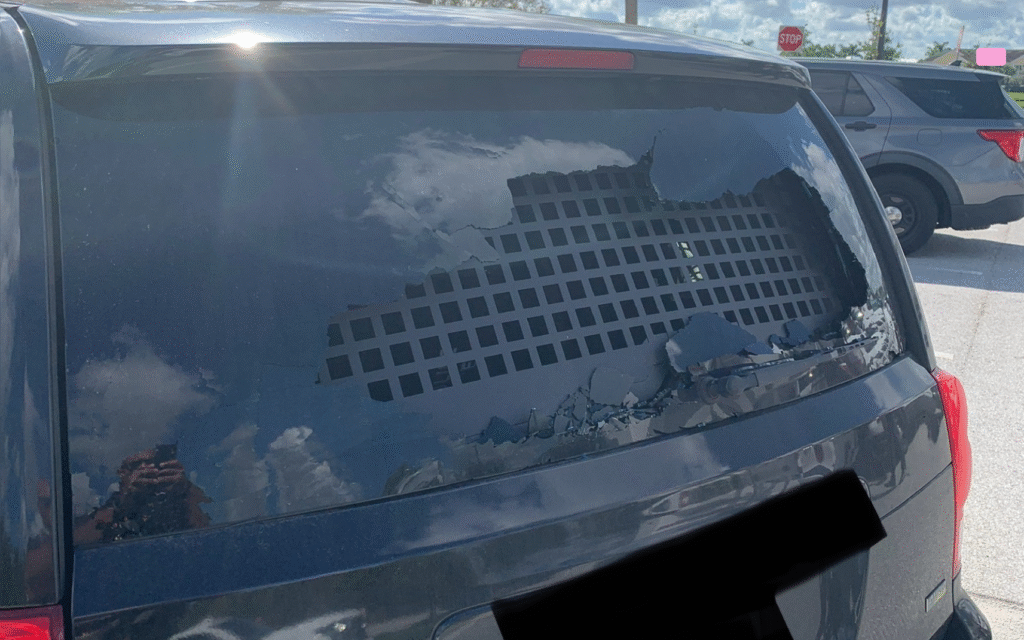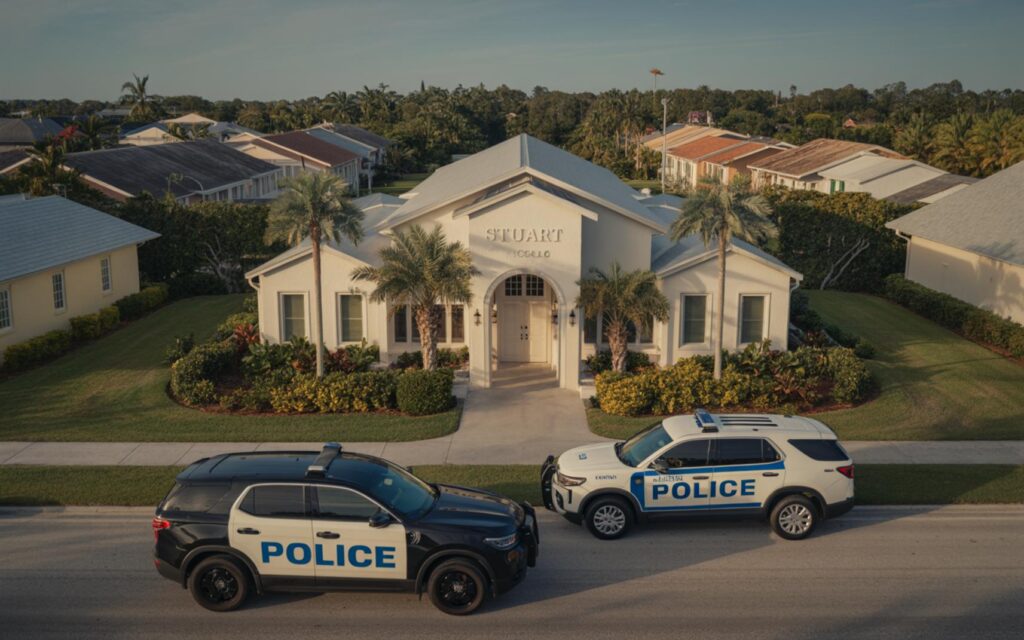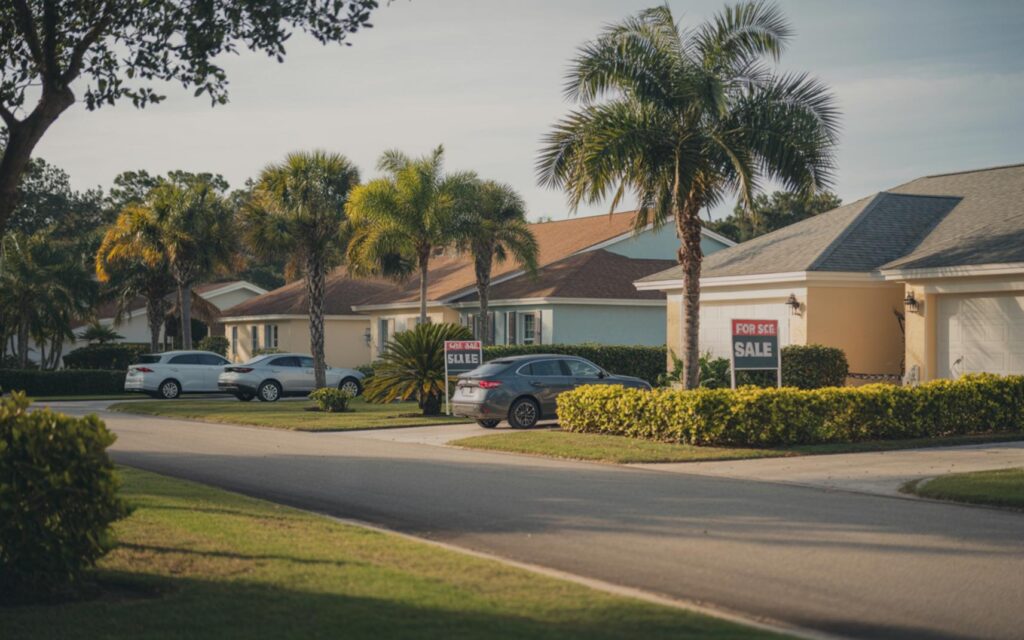Florida home insurance crisis continues to escalate as insurers drop policies at record rates, leaving many homeowners without viable coverage options. According to recent studies, the state faces the highest non-renewal rates in the nation, with significant impacts on property values and the broader housing market. The situation has been further exacerbated by the intensifying risks posed by hurricanes and the ongoing insurance market crisis in Florida.
Florida Home Insurance Crisis by the Numbers
In 2024, Florida experienced a non-renewal rate of 3.35% for homeowners insurance policies, according to a Weiss Ratings study. This figure marks a 1.7-fold increase from the 1.96% rate reported in 2018. The surge in non-renewals comes after two major storms, Helene and Milton, struck the state last year.
Florida’s non-renewal rate now surpasses all other states, with California following closely at 3.18%. The average non-renewal rate across 15 disaster-prone states reached 2.32% in 2024, nearly triple the 0.8% average recorded in 2018.
Key Factors Driving the Florida Home Insurance Crisis
Several factors contribute to the deepening home insurance crisis in Florida:
- Natural disasters: Increased frequency and severity of hurricanes and storms have led to higher claims and risk for insurers.
- Rising premiums: Average annual premiums in Florida climbed 22% after inflation, reaching $3,454, according to Deep Sky Research. For more on how these changes could impact future hurricane seasons, see the latest updates on Florida home insurance rate changes and the 2025 hurricane season.
- Insurer withdrawals: Many private insurers have exited the market, forcing homeowners to rely on the state-backed insurer of last resort.
- Limited affordable options: High costs and reduced availability make it difficult for many residents to secure adequate coverage.
Impact on Florida Homeowners and Housing Market
According to Deep Sky Research, active home insurance policies in Florida dropped by 78% over the past decade. In 2014, there were 3.2 million active policies; by 2024, this number fell to just 710,000. Meanwhile, the state’s Florida’s insurer of last resort now covers 63% of homes, up from only 6% a decade ago.
New policy issuance has also slowed dramatically. In the most recent quarter, only 37,000 new policies were written, down from 164,000 in previous years. These trends have left many homeowners uninsured or underinsured, especially in high-risk areas. The crushing burden of homeowners insurance costs continues to impact Florida residents, making it even harder for many to maintain adequate protection.
Mortgage and Real Estate Implications
Home insurance is a requirement for most mortgage lenders, especially for loans sold to the secondary market. Without affordable coverage, property sales can stall, and home values may decline. Deep Sky Research warns that national banks holding mortgages on Florida properties face increased risk if natural disasters cause widespread uninsured losses.
Comparison with Other States
While Florida leads in non-renewal rates, other states have also seen sharp increases. For example:
- California: Non-renewal rate rose to 3.18% in 2024, nearly four times higher than in 2018, largely due to wildfire risks.
- Louisiana: Rate increased 5.4 times to 2.97%.
- Washington: Rate climbed 4.7 times to 1.86%.
These increases reflect a broader national trend, but Florida’s situation is particularly severe due to its exposure to hurricanes and coastal risks.
Denial of Claims and Cost Burden on Homeowners
A September 2024 Weiss Ratings report found that 13 of the largest homeowner insurers in the United States denied nearly half of all claims in the prior year. In Florida, the cost burden is especially high. According to ValuePenguin, a subsidiary of LendingTree, nearly one in five homes in the Miami area lacks property coverage. This is attributed to high insurance costs, which account for 13.1% of monthly homeownership expenses in Miami and 11.6% in Tampa, compared to a national average of 7%.
Property coverage in these studies includes fire, hazard, and flood insurance, all of which are increasingly difficult to obtain at reasonable rates in Florida.
State Response and Insurer of Last Resort
With private insurers leaving the market, Florida’s insurer of last resort has become the primary coverage provider for most homeowners. According to Deep Sky Research, the insurer’s market share expanded from 6% in 2014 to 63% in 2024. This shift indicates a growing reliance on state-backed policies, which may not offer the same coverage options or pricing as private insurers.
Officials and industry experts warn that this trend could have long-term effects on the state’s housing stability and economic health.
Expert Perspectives on the Florida Home Insurance Crisis
Martin Weiss, founder of Weiss Ratings, stated in a press release that high non-renewal rates are harmful to both insurers and homeowners. Weiss argued that the increase in policy cancellations cannot be solely attributed to insurer earnings pressure, as underwriting and investment income rose by 2.6% over the past six years.
Max Dugan-Knight, a climate data scientist at Deep Sky, described the insurance crisis as an early warning for broader financial risks related to climate change. “Time is running out. One big storm this fall could bring catastrophic losses to thousands of uninsured Florida homes,” Dugan-Knight said in a recent statement.
Frequently Asked Questions About the Florida Home Insurance Crisis
What is the Florida home insurance crisis?
The Florida home insurance crisis refers to the sharp increase in policy non-renewals, rising premiums, and insurer withdrawals from the state. Many homeowners now struggle to find or afford adequate property coverage.
How much have home insurance premiums increased in Florida?
According to Deep Sky Research, average annual home insurance premiums in Florida rose 22% after inflation, reaching $3,454 in 2024.
Are there alternatives for homeowners who lose coverage?
Homeowners who lose private coverage often turn to the state-backed insurer of last resort. However, these policies may have different terms and higher costs than private insurance.
Can you buy flood or hazard insurance separately in Florida?
Yes, homeowners can purchase separate flood and hazard insurance policies, but these may also be expensive or limited depending on location and risk factors.
Where are the highest home insurance costs in Florida?
Miami and Tampa have some of the highest home insurance costs in Florida, with insurance making up over 11% of monthly homeownership expenses in these cities, according to ValuePenguin.
Port St Lucie Talks
